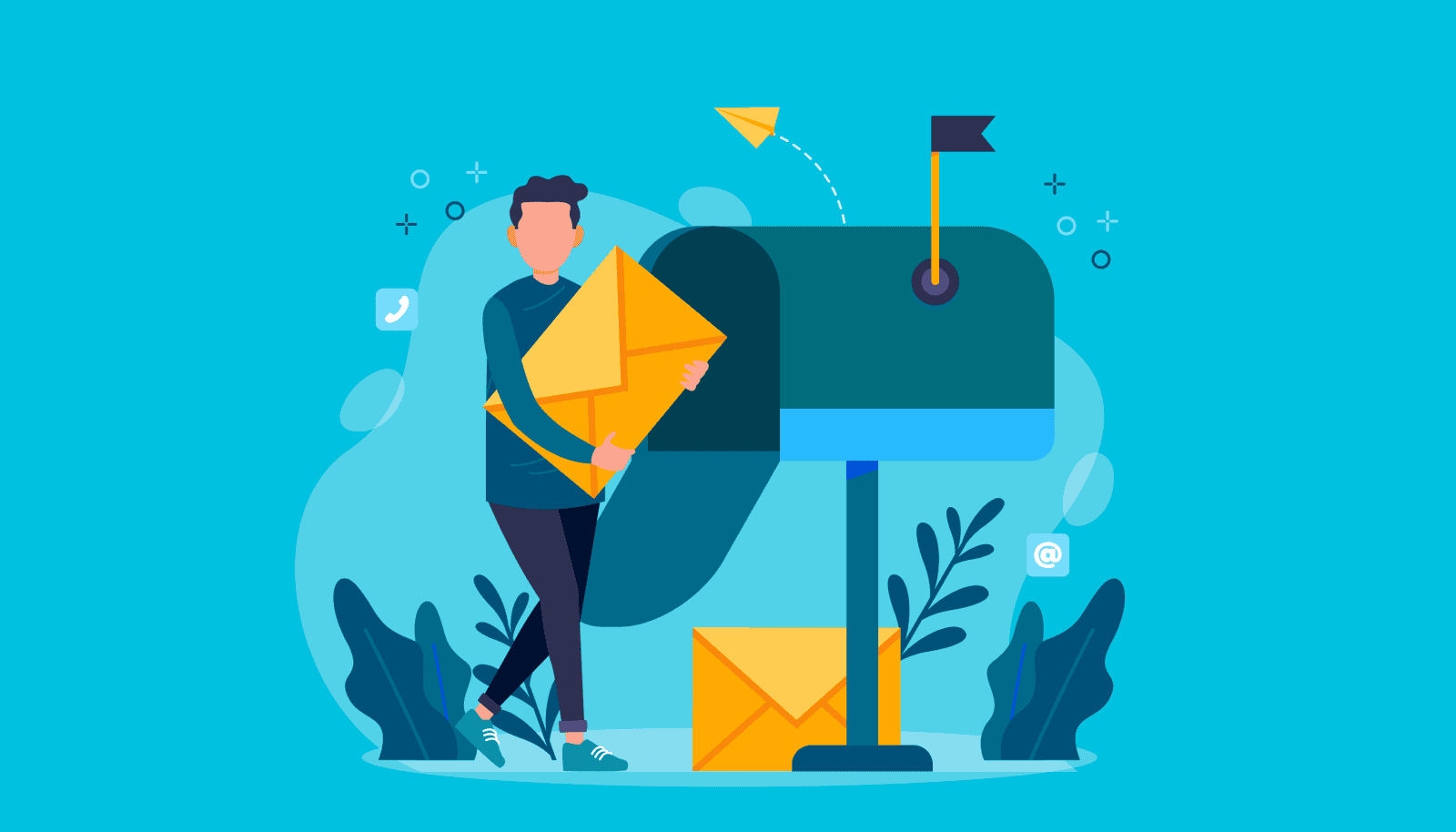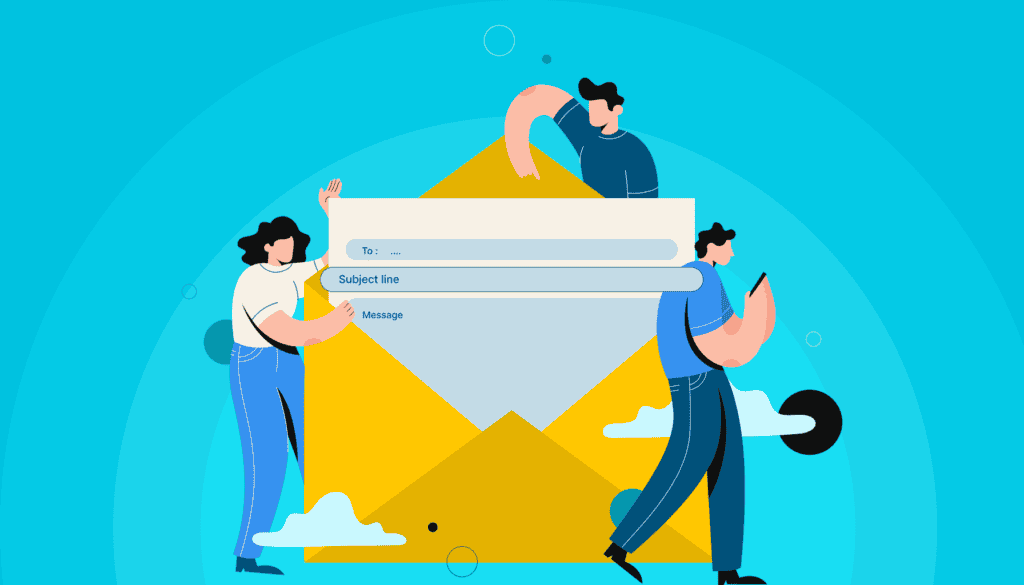Well, hello there! Let’s talk about cold emailing! It can feel like a shot in the dark, but trust me, with the right strategies, it can be your secret weapon to unlocking incredible opportunities.
Picture this: you’re reaching out to potential clients and collaborators who are a perfect fit for your business. They just don’t know it yet!
That’s where the magic of cold emailing comes in. It’s all about making a powerful first impression that makes them eager to learn more.
Ready to become a cold emailing ninja? Let’s dive in!
Unlocking the Power of Personalization: Make It About Them!
Think about the last time you received an email that felt like it was written just for you. It probably caught your attention, right? That’s the power of personalization!
Instead of sending out generic messages, tailor your cold emails to speak directly to each recipient. Do your research, understand their needs and pain points, and show them you’ve taken the time to get to know them.
Here’s how to make it happen:
- Research is Your Best Friend: Before you even think about writing an email, take some time to research your recipient. Check out their LinkedIn profile, their company website, and any recent articles or interviews they’ve been featured in. Look for clues about their interests, their challenges, and their goals. This information will be gold when you’re crafting your email.
- Name Game Strong: Always address the recipient by their first name. It’s a simple touch, but it instantly adds a personal feel.
- Tailor-Made Content: Don’t just copy and paste the same message to everyone. Highlight how your solution can specifically address their unique challenges. For example, if you’re reaching out to a company that’s expanding internationally, mention how your tool can streamline their global marketing efforts.
- Subject Line Magic: Your subject line is your first (and sometimes only) chance to make a good impression. Make it personal and relevant to capture their attention. For example, instead of a generic subject line like “Introducing [Your Company],” try something like “Happy Tuesday, Nick—Helping [Recipient’s Company] Conquer International Markets.”
Remember, personalization is all about showing your recipient that you value their time and you’re genuinely interested in helping them.

Crafting Irresistibly Clickbaity Subject Lines: They Won’t Be Able to Resist!
Think of your subject line as the headline of your email. It’s what will determine whether your email gets opened or ends up in the digital abyss.
To make your subject lines truly irresistible, try these tips:
- Keep It Short and Sweet: People are busy! Keep your subject lines concise and to the point. Aim for around 6–8 words to ensure it’s fully visible on most devices.
- Spark Curiosity and Urgency: Use words that create a sense of intrigue or a need to act now. For example, “Boost Your Sales by 20%?” or “Limited-Time Offer: [Exclusive Benefit]”
- Ask a Question: A well-crafted question can pique your recipient’s interest and make them want to learn more. Try something like “Struggling to Manage Your Remote Team?”
- Personalize It: As we discussed before, personalization is key! Add their name or company name to the subject line to make it feel more relevant to them.
- Avoid Spam Filters: Steer clear of using all caps, excessive exclamation points, or spammy words like “free” or “guaranteed.”
Pro Tip: A/B test different subject lines to see what resonates best with your target audience. Track your open rates and adjust your approach accordingly.
Mastering the Art of Brevity: Get to the Point!
Imagine you’re scrolling through your inbox. Are you more likely to read a long, rambling email or a short, concise one?
The answer is obvious! People are busy and their inboxes are overflowing. To grab their attention and keep them engaged, you need to get straight to the point.
Here’s how to keep your emails short and sweet:
- Focus on the Value Proposition: Clearly articulate the benefits of your product or service and how it can solve the recipient’s problems.
- Cut the Fluff: Avoid unnecessary jargon, technical details, or long-winded explanations. Stick to the most important information and keep your sentences short and impactful.
- Bullet Points Are Your Friends: Break up large chunks of text with bullet points to make your email easier to scan and digest.
- End with a Strong CTA: Tell your recipient exactly what you want them to do next, whether it’s scheduling a call, visiting your website, or downloading a resource.
Remember: The goal is to pique their interest and encourage them to take the next step.
Showcasing Your Expertise: Build Credibility with Social Proof
You’re amazing at what you do, but how do you convince a stranger of that? Social proof is your answer!
Think of it as testimonials from your happy customers. It’s real-world evidence that your product or service delivers results.
Here’s how to leverage social proof in your cold emails:
- Namedrop Big Clients: If you’ve worked with well-known companies or industry leaders, mention them in your email. It instantly boosts your credibility and shows that others trust you.
- Share Success Stories: Instead of just saying what you do, show it! Include brief case studies or testimonials that highlight the positive outcomes you’ve helped others achieve.
- Quantify Your Results: Use numbers and data to showcase the impact of your work. For example, “We helped [Client] increase their website traffic by 50% in just three months.”
Remember: Social proof gives your claims weight and helps build trust with your potential clients.

Offering Irresistible Value Upfront: Give Them a Taste of What You Offer
Let’s be real, everyone loves free stuff! Offering something valuable upfront is a great way to grab your recipient’s attention and make them want to learn more.
Here are some ideas for offering value upfront:
- Free Resources: Create a helpful ebook, checklist, template, or webinar that’s relevant to their industry or interests.
- Exclusive Offers: Offer a free trial, a discount on your services, or early access to a new product.
- Personalized Tips: Based on your research, offer tailored advice or insights that can help them solve a specific problem they’re facing.
Remember: The key is to provide something genuinely valuable that demonstrates your expertise and leaves them wanting more.
Embrace the Power of Follow-Up: Don’t Give Up Too Soon!
It’s rare to get a response to your first email every time. People are busy, and your email may simply have gotten lost in the shuffle. Following up is essential to stay on their radar and remind them of the value you offer.
Here are some tips for effective follow-up:
- Time It Right: Wait about 3-5 days after your initial email before sending a follow-up.
- Keep It Short and Sweet: Your follow-up email should be even shorter than your initial email. Simply reiterate your main point and include a clear call to action.
- Add Value: Consider including additional information or resources that weren’t included in your first email.
- Be Respectful: Avoid being pushy or aggressive. Remember, you’re trying to build a relationship, not force a sale.
- Space Out Follow-Ups: If you don’t hear back after a few follow-ups, it might be time to move on. Don’t bombard your recipient with emails, as this could come across as spammy.
Remember: Following up shows that you’re serious about helping them and that you’re not going to give up easily.

Test and Optimize Your Emails: Find What Works Best for You
There’s no one-size-fits-all approach to cold emailing. What works for one person might not work for another. That’s why it’s crucial to test and optimize your emails to find what resonates best with your target audience.
Here are some key elements to test:
- Subject Lines: Experiment with different subject lines to see which ones get the highest open rates.
- Email Length: Try sending both short and long emails to see which ones get the best response rates.
- Calls to Action: Test different CTAs to see which ones are most effective at getting people to take action.
- Email Design: Experiment with different layouts, fonts, and colors to see what looks best and is easiest to read.
Remember: Testing and optimizing is an ongoing process. Continuously analyze your results and make adjustments to improve your cold emailing strategy over time.
Conclusion
Cold emailing can be a powerful tool for building relationships, generating leads, and growing your business. By implementing these proven strategies, you can transform your cold emails from forgotten messages to valuable conversations. Utilizing effective cold emailing strategies for success involves personalizing your outreach and focusing on the recipient’s needs and interests. By crafting compelling subject lines and providing genuine value in your message, you can increase engagement and response rates. Ultimately, these practices not only enhance your chances of making meaningful connections but also lay the foundation for long-term business relationships. To maximize the effectiveness of your outreach, it’s essential to craft personalized messages that resonate with your recipients. Utilizing cold email strategy tips, such as focusing on the recipient’s pain points and offering solutions, can significantly increase your response rates. Additionally, tracking engagement and refining your approach over time will lead to even greater success in your cold email campaigns. To maximize the effectiveness of your messages, personalize your outreach and show genuine interest in the recipient’s needs and challenges. Additionally, utilizing cold email outreach strategies that emphasize clarity and compelling subject lines will increase your open rates and engagement. With persistence and the right approach, your cold emails can become a vital part of your overall marketing strategy.
Remember, personalize your emails, craft compelling subject lines, keep it concise, showcase your expertise, offer value upfront, follow up strategically, and test and optimize your approach.
Now go out there and rock your cold emailing game!
FAQs
How many follow-up emails should I send? A good rule of thumb is to send 2-3 follow-up emails spaced out over a few days or a week. If you don’t hear back after that, it’s probably best to move on.
What’s the best time to send cold emails? The best time to send cold emails will vary depending on your industry and target audience. However, generally speaking, Tuesday and Wednesday mornings tend to have the highest open rates.
How can I avoid having my cold emails marked as spam? Avoid using all caps, excessive exclamation points, or spammy words in your subject line or email body. Personalize your emails and make sure your content is relevant to the recipient. Use a reputable email marketing service and build a clean email list.

